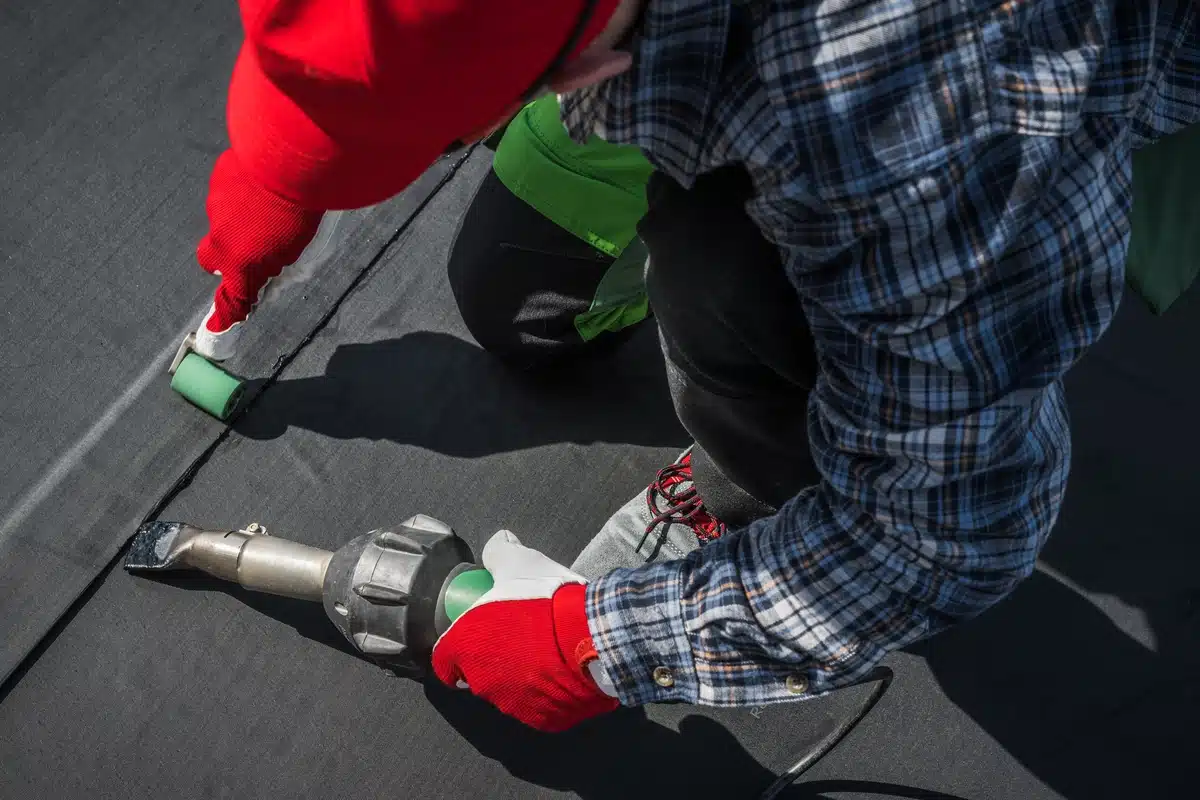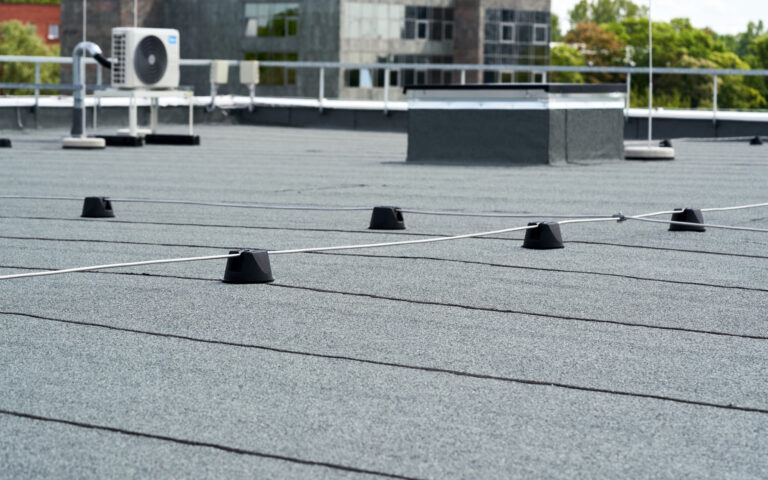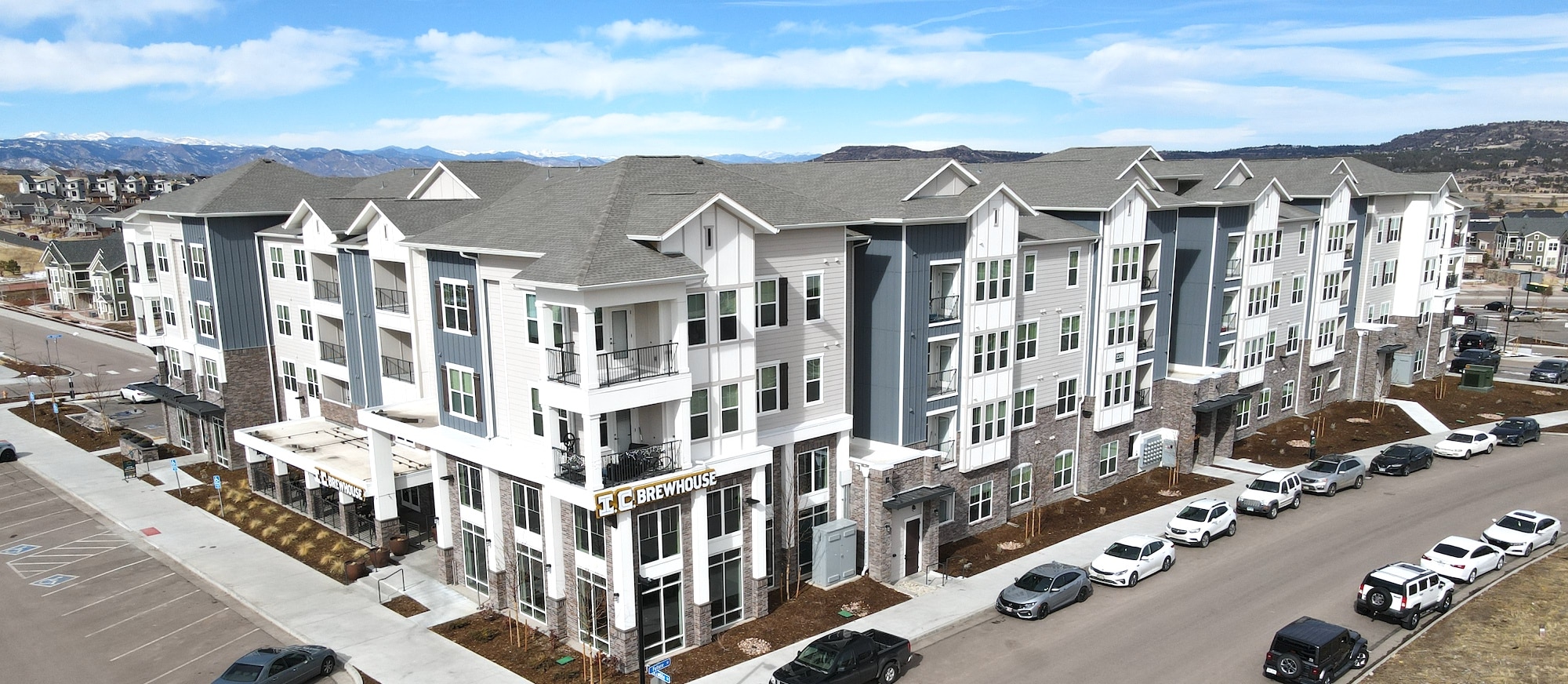In the realm of commercial roofing, selecting the right material is crucial for ensuring durability, longevity, and cost-effectiveness. Two popular options that often come into consideration are Thermoplastic Polyolefin (TPO) and Ethylene Propylene Diene Monomer (EPDM). Both materials offer distinct advantages and cater to different needs and preferences.
In this expert guide, we’ll delve into the characteristics of TPO vs. EPDM, comparing:
- Their features
- Factors to consider when choosing between them
- Installation costs and lifespan
- Maintenance requirements
- Tips on finding a qualified commercial roofing contractor
Understanding TPO
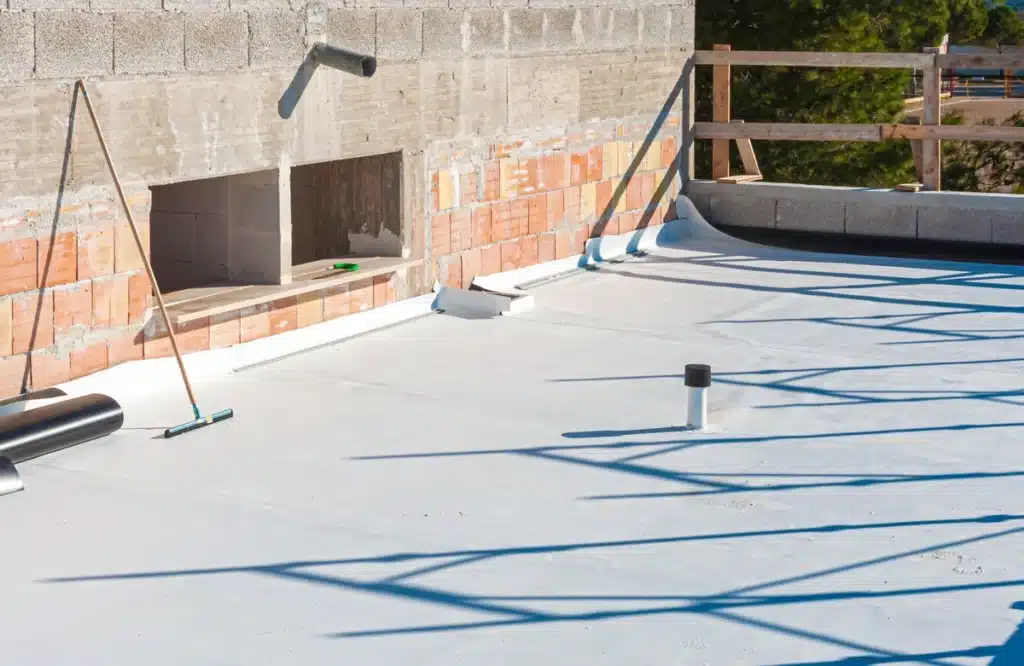
Thermoplastic Polyolefin (TPO) is a single-ply roofing membrane made from a blend of polypropylene and ethylene-propylene rubber. It’s renowned for its flexibility, heat-welded seams, and resistance to ultraviolet (UV) radiation and chemicals. TPO roofs are typically white or light-colored, which helps reflect sunlight and reduce cooling costs, making them environmentally friendly and energy-efficient.
Advantages of TPO:
- Energy Efficiency: TPO roofs boast high solar reflectivity, keeping the building cooler and reducing the strain on HVAC systems, leading to lower energy bills.
- Durability: TPO membranes are resistant to punctures, tears, and impacts, ensuring long-lasting protection for commercial structures.
- Chemical Resistance: TPO is resistant to chemicals, oils, and greases, making it suitable for environments with potential exposure to such substances.
- Ease of Installation: TPO membranes are lightweight and available in large rolls, facilitating quick and efficient installation, which can translate to lower labor costs.
- Low Maintenance: TPO roofs require minimal maintenance, primarily consisting of periodic inspections and cleaning to ensure debris doesn’t accumulate in drains and gutters.
Understanding EPDM
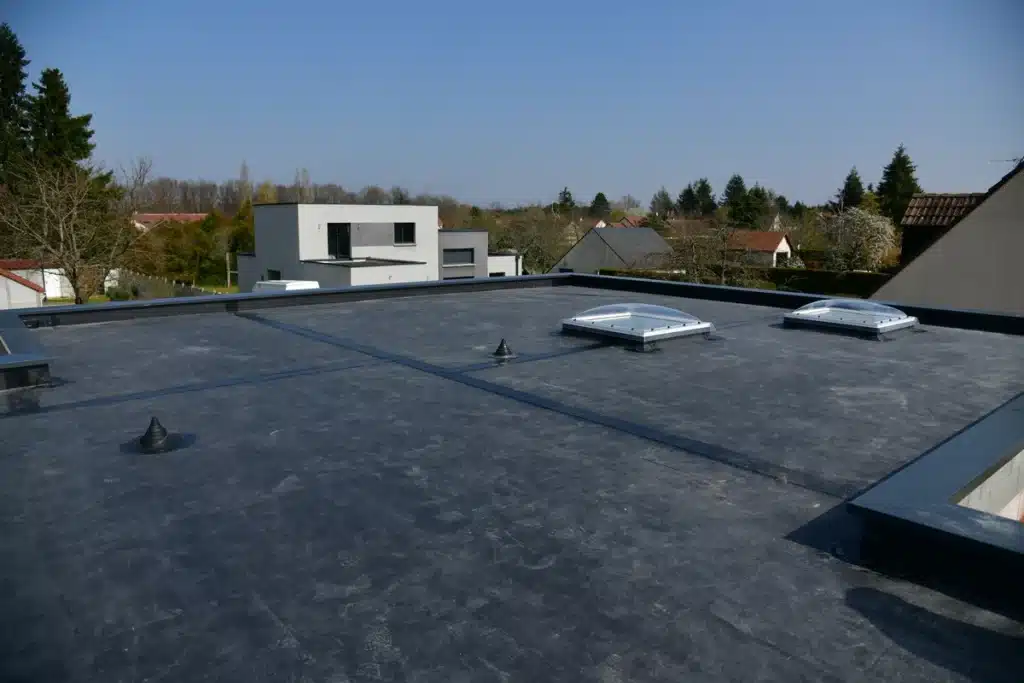
Ethylene Propylene Diene Monomer (EPDM) is another popular choice for commercial roofing. It’s a synthetic rubber membrane composed of ethylene, propylene, and a small amount of diene monomer. EPDM roofs are known for their durability, weather resistance, and ease of installation. They are typically dark-colored and have a smooth surface.
Advantages of EPDM:
- Weather Resistance: EPDM roofs have excellent resistance to hail, wind, and extreme temperatures, making them ideal for regions prone to harsh weather conditions.
- Flexibility: EPDM membranes can stretch and adapt to building movements without compromising their integrity, reducing the risk of cracks and leaks.
- Low Cost: EPDM roofing materials are relatively affordable compared to some alternatives, making them a cost-effective choice for budget-conscious projects.
- Longevity: EPDM roofs have a proven track record of durability, with a lifespan of 30 years or more when properly installed and maintained.
- Recyclability: EPDM is environmentally friendly and can be recycled at the end of its lifespan, contributing to sustainable building practices.
Choosing Between TPO and EPDM
When deciding between TPO and EPDM for your commercial roofing project, several factors should be considered:
- Climate: Consider the climate of your region. TPO’s reflective properties make it ideal for hot climates, while EPDM’s weather resistance makes it suitable for areas with extreme temperature fluctuations or frequent storms.
- Budget: Evaluate your budget constraints. EPDM is generally more cost-effective upfront, but TPO’s energy efficiency may lead to long-term savings on utility bills.
- Building Design: The design and layout of your building may influence your choice. TPO’s white or light-colored membranes can enhance aesthetics and reduce cooling costs, while EPDM’s flexibility makes it suitable for complex roof structures.
- Contractor Experience: Ensure that your chosen roofing contractor has experience with the material you select. Proper installation is crucial for maximizing the lifespan and performance of your roof.
Installation Costs and Lifespan
The cost of installing a TPO or EPDM roof depends on various factors, including the size of the roof, labor rates, and the complexity of the installation. Generally, EPDM roofs tend to be slightly cheaper upfront than TPO roofs. However, TPO’s energy-saving benefits may offset the initial investment over time.
In terms of lifespan, both TPO and EPDM roofs can last for several decades with proper installation and maintenance. TPO roofs typically have a lifespan of 20-30 years, while EPDM roofs can last 30 years or more. Regular inspections, prompt repairs, and routine maintenance are essential for maximizing the longevity of both roof types.
Maintenance Requirements
Maintaining a TPO or EPDM roof is relatively straightforward but essential for ensuring optimal performance and longevity:
- Regular Inspections: Schedule regular inspections to check for signs of damage, such as punctures, tears, or loose seams.
- Cleaning: Keep the roof clean by removing debris, leaves, and other materials that can clog drains and gutters.
- Prompt Repairs: Address any issues promptly to prevent minor problems from escalating into costly repairs or premature roof failure.
- Professional Maintenance: Consider hiring a professional roofing contractor to perform annual maintenance, including inspections, repairs, and cleaning.
Finding a Qualified Commercial Roofing Contractor: 5 Tips
When it comes to installing or repairing a commercial roof, hiring a qualified and experienced roofing contractor is paramount. Here are some tips for finding the right contractor:
1) Research:
Take the time to research local roofing contractors and read reviews from previous clients. Look for contractors with experience installing TPO and EPDM roofs.
2) Credentials:
Verify that the contractor is licensed, bonded, and insured. Ask for proof of insurance and any relevant certifications or credentials.
3) Experience:
Choose a contractor with a proven track record of successfully completed commercial roofing projects. Ask for references and examples of past work.
4) Communication:
Ensure that the contractor communicates effectively and addresses any questions or concerns you may have.
5) Written Estimate:
Obtain written estimates from multiple contractors and compare pricing, materials, and warranties before making a decision.
Learn More About TPO and EPDM Roofing Systems
Both TPO and EPDM are viable options for commercial roofing projects, each offering unique advantages and characteristics. By carefully evaluating your specific needs, budget, and preferences, you can choose the material that best suits your requirements.
Remember to prioritize proper installation, regular maintenance, and hiring a qualified contractor to ensure the longevity and performance of your commercial roof. Need a team you can trust? Contact Tectum Roofing today to get started!
